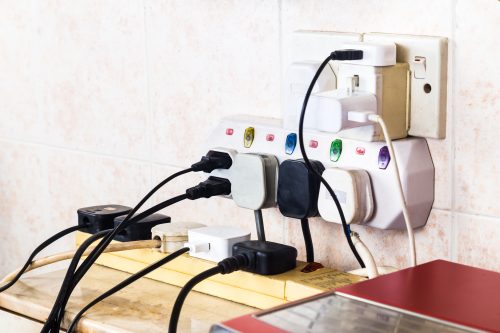
How to Prevent Electrical Overloads in Your Cart
Operating a cart loaded with appliances and electronics can be convenient for many applications, from food vending to outdoor parties. However, overloading the electrical system can cause major safety issues and damage. Electrical fires, explosions, electrocution – the risks are very real if you exceed the capacity of the wiring and breakers.
So how much is too much for your cart’s electrical system? And what can you do to avoid catastrophic overloads? This guide will cover everything you need to know.
What Causes Electrical Overloads in Carts?
Several factors can lead to an overloaded circuit in a cart:
Exceeding the Circuit Breaker Capacity
Cart electrical systems typically use 15A or 20A circuit breakers. This means the wiring is rated for a maximum of 1800 watts or 2400 watts respectively. Plugging in too many appliances at once can cause you to exceed this capacity.
Always calculate the total wattage of all electrical devices and ensure it remains under the circuit breaker limit. High power items like microwaves, refrigerators, and motors will add up quickly.
Faulty, Outdated, or Damaged Wiring
If the wiring in your cart is outdated, damaged, or not up to code, it may not be able to handle the electrical load you are demanding from it. This can cause overheating of wires and connections.
Warning signs include flickering lights, warm outlets, and buzzing from the electrical system.
Power Surges
Sudden spikes in the electrical current, caused by issues like lightning strikes or accidents, can momentarily exceed the capacity of the cart’s electrical system. Sensitive electronics may be damaged.
Using Extension Cords
Extension cords are designed for temporary, not permanent, connections. Using them long-term to power appliances in your cart can lead to overloading and overheating of the cords. It also creates a tripping hazard.
Consequences of Electrical Overloads
The risks of serious electrical hazards include:
- Tripped circuit breakers and power outages
- Damage to appliances, devices, and electronics
- Electrical fires
- Explosions
- Electrocution injury or death
These consequences can result in devastating loss of property or life. Safety must be the top priority.
How to Prevent Electrical Overloads in Your Cart
Here are key strategies to protect your cart’s electrical system:
Calculate Total Electrical Load
Add up the wattage of all devices and appliances in your cart. Compare this to the capacity of your circuit breaker. For example, a 15A breaker can safely power up to around 1800 watts.
Use Dedicated Circuits for Large Appliances
High-power devices like refrigerators, microwaves, and air conditioners should have their own dedicated circuit. This prevents overloading shared circuits.
Upgrade Outdated Wiring and Breakers
If your cart has damaged or outdated wiring, replace it to match modern electrical demands. Upgrade circuit breakers too. Use arc-fault breakers for added protection.
Distribute Electrical Load
Do not bunch many high-wattage appliances together on one circuit. Spread the electrical load across multiple circuits to prevent overtaxing any single one.
Add Extra Circuits If Needed
If the electrical demand exceeds your current capacity, have an electrician safely install new dedicated circuits tied into the fuse panel.
Use Surge Protectors
Install surge protectors to guard sensitive electronics against power spikes. Also have proper lightning protection like grounded rods.
Avoid Using Extension Cords
Use permanent, direct connections to outlets instead. Only use heavy duty surge protector power strips.
Regular Maintenance
Routinely inspect all electrical components in your cart for any signs of damage, overheating, or wear. Replace outdated or damaged wiring, breakers, connections, etc. before problems occur.
What To Do If an Overload Occurs
If you experience flickering lights, tripping breakers, or other signs of an overload:
- Immediately shut off all devices connected to the overloaded circuit.
- Turn off the main power disconnect if overloading persists.
- Call a qualified electrician to thoroughly inspect and repair your cart’s electrical system.
- Never attempt to repair overload issues yourself unless you are properly trained and equipped. The risks of electrical hazards like electrocution and shock are far too great.
In Summary
Preventing electrical overloads in your cart comes down to proper planning, being aware of your overall electrical load, and good maintenance. If in doubt, consult with an expert electrician. Your safety is paramount. Be sure to check your cart’s ez-go golf cart fuse box location as part of any electrical inspection. Stay safe and avoid overtaxing your circuits.







